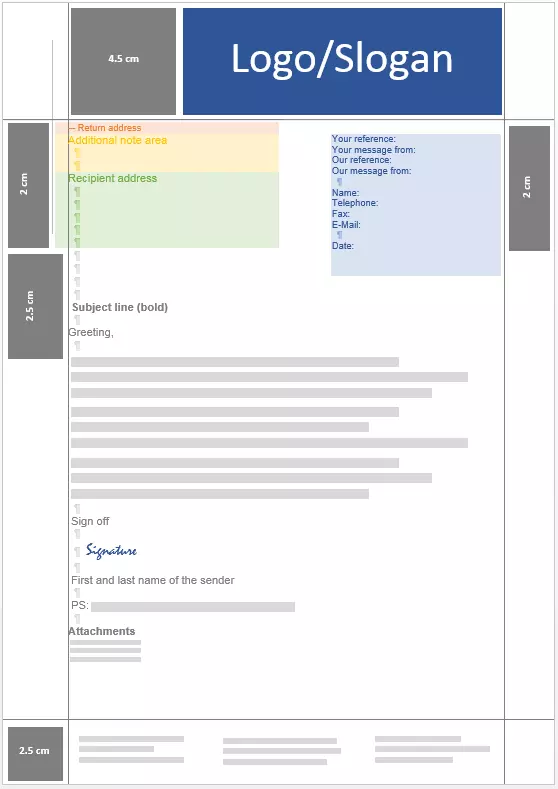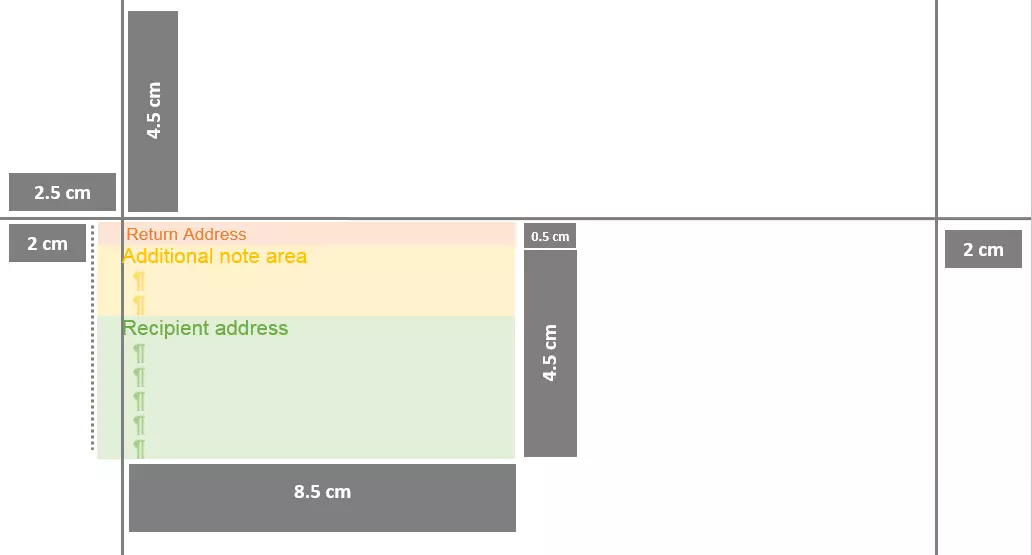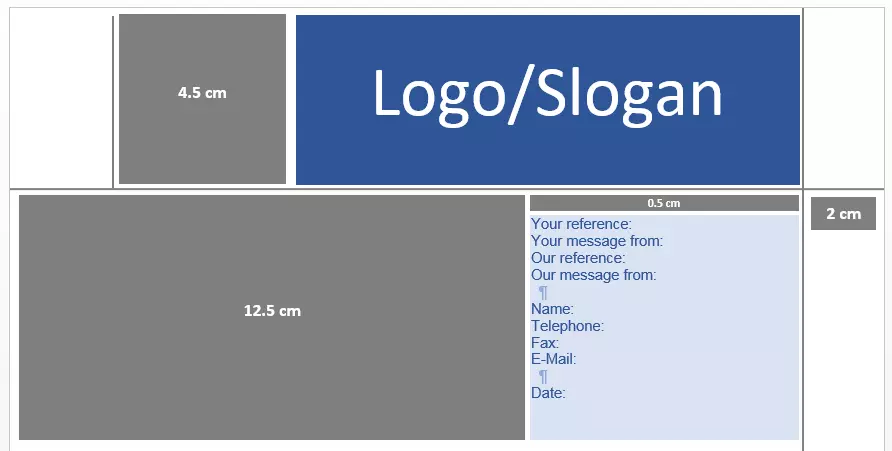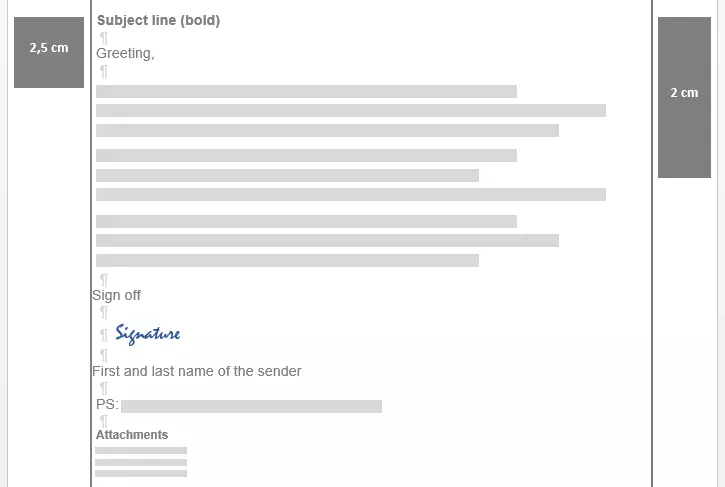The perfect business letter – structure, content, and design
There are certain elements that should be included in all official business correspondence. What defines a business letter and what guidelines should you observe when writing them? Find out here.
What is a business letter?
Any externally-directed, written communication or correspondence between two business partners or owners is regarded as a business letter, if the correspondence is addressed to a specific recipient or group of recipients. The standard requirements for business letters apply to other things too:
- Offers
- Order and inquiry confirmations
- Acknowledgements of receipt
- Bills
- Receipts
- Price lists
- Order forms
- Advertising letter to the addressee named in the address field
The external form of the letter is irrelevant.
If you are writing a business letter (rather than a fax or e-mail, for example), then there are certain content requirements, depending on the type of company. These requirements make it possible for business partners to inform themselves in advance about the essential circumstances of their correspondent when it comes to burgeoning business relationships. The following applies: If a document is being used to establish initial written contact between business partners in an individual case, it should contain all the relevant information. For example, a company registration number offers the recipient of a business letter the opportunity to obtain information about the company from the local chamber of commerce.
The following categories of requirements are excluded from business letters:
- Internal correspondence between offices, departments, branches, or subsidiaries in the same company
- Written communications to an indeterminate group of recipients or recipients determined by group characteristics – for example, direct mail or advertising material
- Written notifications that are created using forms as part of an existing business relationships – for example, delivery notes, shipping notices, or pick-up notifications
These documents are not regarded as business letters.
Business letters are used for written communication between two business partners and usually contain a business transaction. This means it can be between businessmen (business-to-business, B2B for short), or between businessmen and private individuals (business-to-consumer, B2C for short). Business letters should be clearly distinguished from private letters, which serve the exchange of personal information between private individuals.
- Free website protection with SSL Wildcard included
- Free private registration for greater privacy
- Free Domain Connect for easy DNS setup
Required information for business letters
Since business letters are used to establish contact, corresponding documents should contain all standard information that has proven its worth in the context of business communication – even if this is not required by law. Standard business information in business letters include:
- Place and date of creation
- Address including e-mail and website address
- Company bank details
- VAT number (if applicable)
In addition, there is more information that is standard to include, depending on your business type. In the following, we will list this information.
Requirements for sole traders
Sole traders business correspondence should include:
- Company name (that matches the name registered with HMRC, Companies House or the local authorities)
- Any relevant legal form additions
- Business address
If you have chosen a fictitious name for your company to trade under, you are required to include your own personal name on all official stationery being used for business purposes.
General/limited partnerships
Business letters issued by general partnerships or limited partnerships should contain the following information:
- Company name (that matches the name registered with Companies House and HMRC)
- Legal form addition (depending on legal form)
- Registered company office
Be sure that the contact information for all business partners in your partnership are included on official correspondence.
Limited company
The mandatory information for a limited liability company includes the following disclosures:
- Company name (that matches the name registered with Companies House and HMRC)
- Legal form addition
- Registered company office and place of business address (if different)
- Company registration number
- Full name of all partners and chairman of the supervisory board (if any)
Corporation
The following disclosures are required in business letters for corporations:
- Company name (that matches the name registered with Companies House and HMRC)
- Legal form addition
- Registered company office
- Company registration number
- First name and surname of all members of the Board of Managing Directors, including a note stating who is Chairman of the Board of Managing Directors
- First name and surname of the Chairman of the Supervisory Board with the surname and at least one first name written out in full.
If the corporation is in the liquidation phase (phase of business after a company has been dissolved), this must also be stated in business letters.
Page structure and design
To ensure smooth communication with business partners, it is advisable to write business letters that you send by post or PDF format as standard letters. However, there is no obligation to do so.
There are no legal requirements for the structure and design of business letters. This means, theoretically, that you can use as many slides or graphics as you like. However, both business partners and private customers will expect professional formatted letters. They may consider deviations from the norm to be unprofessional, and, in the worst case, can lead to uncertainty and distrust.
Margins
Standard business letters are written in A4 format, portrait oriented. We recommend the following page margins for this kind of document:
- Upper margin: 45 mm
- Lower margin: at least 25 mm
- Left margin: 25 mm
- Right margin: 20 mm
The following graphic shows what this kind of formatted business letter looks like:
Font
Generally, there is no standard font for business letters. Entrepreneurs have freedom of choice here to pick a font that suits them. Please note, however, that the choice of font has a considerable effect on the typeface, particularly because of the variety of sizes when it comes to fonts. Fonts like Times New Roman, Arial, or Helvetica are the most commonly used, however all easy-to-read fonts with balanced proportions are suitable for business letters.
Font size
Write your business letters in 11 or 12-point font. For documents with large text bodies, 11 is fine, but if the letter is shorter then go for 12. This guide and template is based on the assumption that you’re using one of the commonly used fonts in these sizes. If your company uses an exotic font as part of its corporate design, be sure to adjust the font size accordingly.
Letterhead: address field and information block
The upper part of the letterhead corresponds to the upper edge of the document. Starting from the page’s edge, 4.5 cm is freely available for your designs. Entrepreneurs usually place graphic elements like company logos or slogans in this area.
Note that design elements that you place at the edge of the page may end up outside the printable area.
After 4.5 cm, the address field and the information block follow on the upper margin.
Address field
The address field – also called the window area – contains the name and address of the recipient as well as the return information. Place the address field 4.5 cm below the top edge of the document, 2 cm from the left margin. The window area width is 85 mm. The address text begins at a distance of 0.5 cm from the left edge of the address window.
The height of the address field is 4.5 cm plus 0.5 cm for return information. This corresponds to a total of 10 lines of text.
A smaller font size – e.g. 8 points – is suitable for the return information. If the font size is less than 10 points, use a sans serif font.
The return information is followed by a 3-line additional and note zone with a total height of 12.7 cm. The remaining 6 lines of the address field are intended for the recipient address.
Design the address details without blank lines. If you do not make any comments, the 3 lines between the return address and the recipient address remain empty.
Information block or reference character line
The information block starts 5 cm below the upper edge of the document and at the same height as the additional and note zone of the address field. With a distance of 12.5 cm to the left edge and maximum width of 7.5 cm, the information block is located on the right-hand side of the letterhead.
A standard information block will contain the following key words:
- Your reference:
- Your message from:
- Our reference:
- Our message from:
- Name:
- Phone:
- Fax:
- E-Mail:
- Date:
Group them by a space before “Name” and “Date.” If necessary, adapt the keywords to your business requirements. This is referred to as the design information block.
Separate the corresponding information from the keyword with a colon including the following space. In the best case, the margin on the right side is 2 or at least 1 cm.
The information block is followed by the subject line with an interval of at least 2 blank lines.
As an alternative to the information block, you can also place the corresponding information in a reference character line two blank lines below the address field.
The usual information in the reference character line is:
- Your reference, your message from:
- Our reference, our message from:
- Phone, Name
- Date
Place the first word in the reference character line 2.5 cm from the left margin. The other keywords follow at a distance of 7.5 cm, 12.5 cm, and 17.5 cm. The corresponding information is entered (usually automatically) below the keywords, indented with the first letter of each keyword.
We recommend that you use the information block as a contemporary alternative to the reference character line.
The recommended date format for the information block or the reference sign line is month/day/year, with a full month or four digit abbreviation (including abbreviation point).
To ensure that telephone and fax districts are as legible as possible, we recommend listing them with a space between the area code and the number of the destination subscriber. Extension numbers may be appended with a hyphen. The same specifications apply to mobile numbers as to fixed network numbers.
[Area code] [Phone number]-[Extension]
20 7683-4719
+44 161 227-2517
For international business letters, replace the leading area code with the country code for the UK: +44. Separate the country code from the area code with a blank character.
Subject line
The subject line is placed 2 blank lines below the information block or the reference character line, aligned to the left and usually highlighted in bold. The distance from the left side edge is 2.5 cm.
In the best case, the subject describes the content or reason for the letter in a few words, may include a transaction or offer number if necessary and may extend over several lines.
Greeting, text body, and greeting formula
The greeting and text body are placed at a distance of 2.5 cm from the left margin of the page and formatted left-justified.
The business letter title follows 2 blank lines after the subject line, ends with a comma, and is separated from the rest of the text by a following blank line.
How you formulate your greeting is up to you. For business correspondence, we recommend the formal salutation:
“Dear Sir/Madam,.. ”
Less formal wording can be used in existing business relationships:
“Hello, Mr./Mrs.,.. ”
“Dear Mr./Ms.,.. ”
In principle, it is better to be too formal than too casual.
Use blank lines to divide the text body into manageable paragraphs. If your business letter covers several pages, wrap the surrounding text 3 lines before the footer with a page break. The letterhead is only used on the first page.
Number the pages by right-justifying the page number in the footer.
The sign off phrase is separated from the text body by a blank line. If the company name follows the sign off, it is separated from the sign off by another blank line. Then follow 3 blank lines for the sender’s signature.
Repeat the first and last names of the person signing in typewritten form below the signature.
The usual sign off is “Yours sincerely” or “Best wishes,” but feel free to choose whatever you feel comfortable with.
Attachment note
Place the attachment note exactly 3 blank lines below the greeting formula, or, if necessary, one blank line below the typewritten repetition of the signature.
The attachment note is introduced by the word “attachments.” Use this in bold and without a colon. Then list each plant in a separate line.
Footer
The footer of the business letter’s first page contains all the business information to which your entrepreneur is obliged according to its legal form.
As a rule, information on the sender’s business premises, means of communication, and account details is also provided here for the recipient.
This letter foot should be placed with a distance of 2.5 cm to the left and 2.0 cm to the right side edge. The height is variable and depends on requirements, but should be at least 2.5 cm.
For readability’s sake, the business information in the letter footer is generally grouped into thematic blocks.
Writing a business letter – dos and don'ts at a glance
Dos
- Keep it short and snappy: In business letters, whether mail or e-mail, you should get straight to the point. As a rule, you won’t be the only one who contacts the recipient of your letter from a business perspective. Therefore, please formulate briefly, concisely, and with a meaningful subject line. Business letters should only exceed an A4 page in exceptional cases. If necessary, store complex tables, illustrations, or invoice details in the attachments.
- Personal greetings: If possible, address the recipient(s) of the business letter personally. If necessary, research the name of the responsible contact person and make sure that the spelling of their name is correct. If no specific recipient is identified, a neutral form of address like “Dear Sir/Madam” would be a good choice.
- Postscript: The postscript, PS for short, originally served as a supplement in handwritten letters, but has acquired a new function in the age of machine text production. The postscript can be used as a supplement to the actual business letter or to highlight important information. The characteristic PS with a postscript colon catches the eye. Use this supplement, for example, to draw attention to current offers or your internet presence.
Don'ts
- Phrases and obsolete formulations: Formulate business letters in a contemporary and recipient-oriented way. Avoid stereotypical text blocks, phrases, and outdated idioms. Write business letters in clear language, without unnecessary ornamentation. Remember: Business letters convey your corporate image. Those who bore customers and business partners with trite phrases or dead bureaucratic language are wasting opportunities. With modern business letters, on the other hand, which are individually tailored to the recipient, you signal an interest in the recipient and will be remembered for a long time.
- Spelling mistakes: Incorrect letters seem unprofessional. This applies not only to the structure and design, but particularly to orthography and punctuation. Therefore, read business letters carefully and correct them, or call in professional help if necessary.
- Negative formulation: Avoid negations and negative choice of words. Even bad news can usually be translated into positive words. Show options instead of building language walls: Compare “Unfortunately I can’t answer that” and “I’ll look into it and get back to you right away.” Which sentence would you rather hear? Replace formulations that appear pejorative or unfriendly, or point to foreign determination and problem orientation, with a friendly and solution-oriented alternative, without becoming a whitewash.
- Passive constructions: While passive sentences eliminate any motivation by concealing the acting subject, active formulations emphasize the action and therefore appear powerful and dynamic. Compare: “Your request will be processed as quickly as possible” and “My colleague Mr. Smith will process your request as quickly as possible.” With the first sentence, it remains uncertain who will deal with your request. The second sentence gives you a better feeling, because here you know that you can count on Mr. Smith.
- Nested sentences: A complicated sentence structure hampers understanding and thus hampers communication. Replace excessive formulations with multiple subordinate clauses or embedded participle constructs with simple, clearly-understandable statements.
Please note the legal disclaimer relating to this article.






